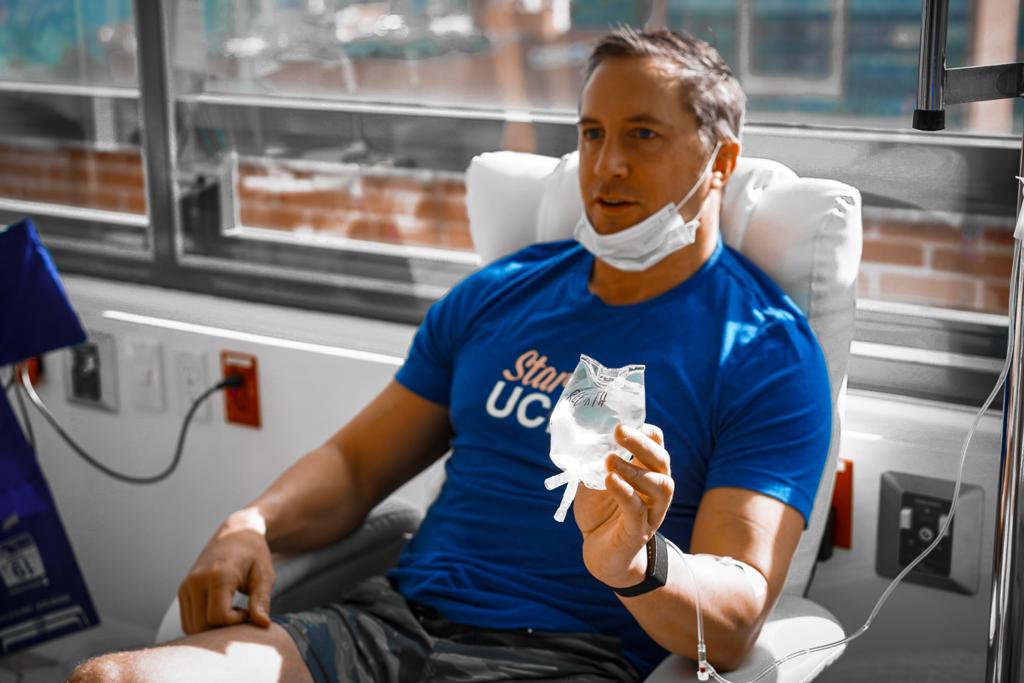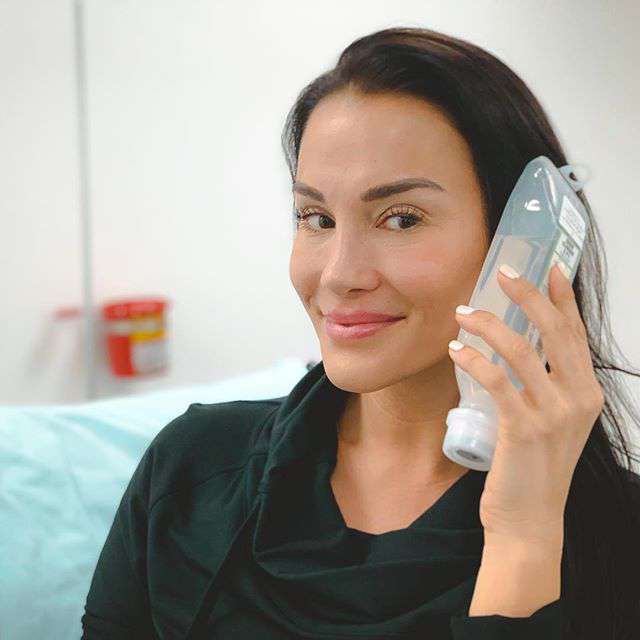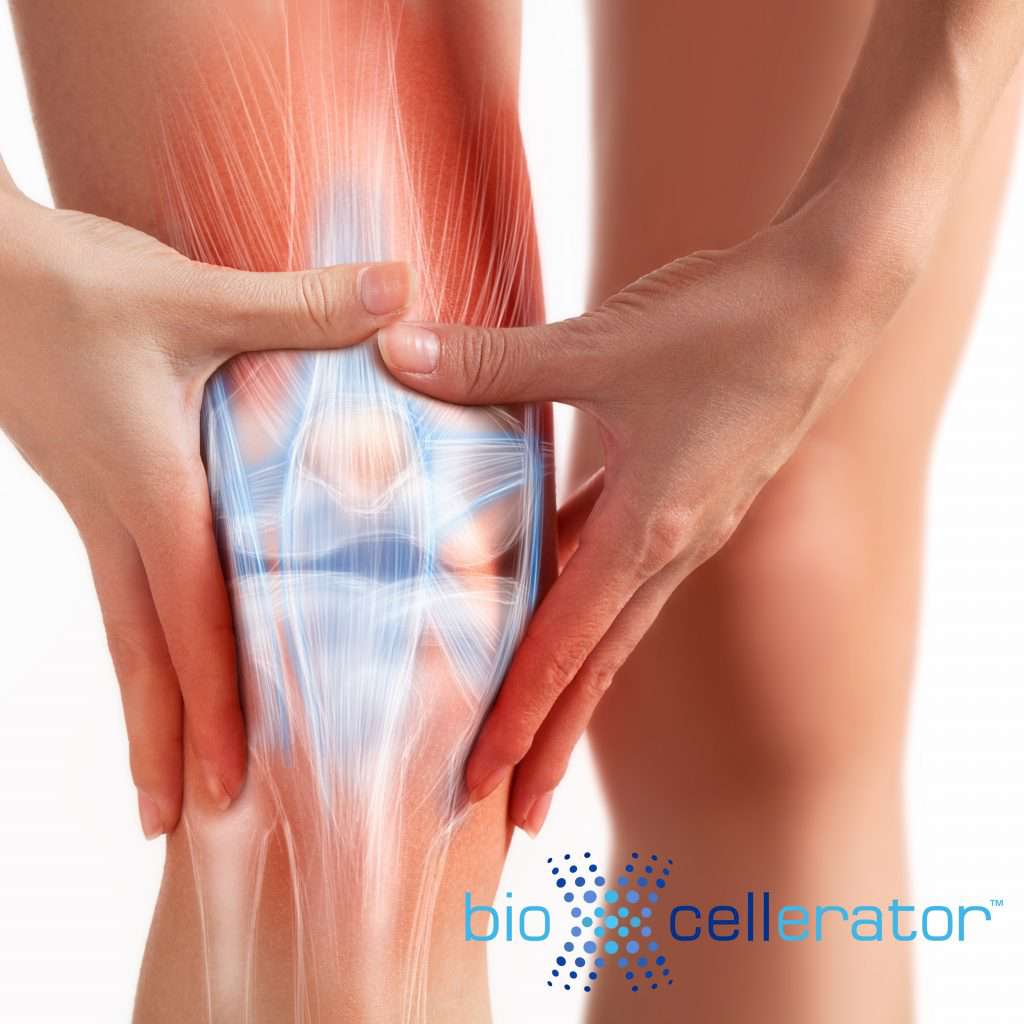Guide to stem cell therapy:
Essential criteria to consider for selecting the best stem cell clinic and treatment for you
Introduction
At BioXcellerator, we offer many years of experience treating patients at our state-of-the-art clinic in Colombia. We understand the criteria that are important to patients when choosing a clinic.
Stem cell therapy shows remarkable results in helping promote healing of injuries, treating autoimmune diseases and degenerative conditions, alleviating chronic pain, and much more. But selecting the best clinic requires due diligence and can be a daunting task. It can be confusing to evaluate different types of cells, numerous treatment protocols, fraudulent advertising, and major differences between treatments in the U.S. and those available offshore.
Whether you choose to be treated at our clinic or not, the information in this guide will be helpful as you evaluate your options.
Although there are no guarantees when it comes to medical care, the more informed you are about the safety and effectiveness of a specific stem cell treatment and the clinic you choose, the more likely it is that you’ll make a better decision based on the quality, safety, and potential effectiveness of treatment for your condition.
This guide is designed to educate those without a scientific background on how science supports stem cell therapy available in the U.S. and in clinics located offshore.
This guide covers eight essential criteria and includes a list of questions to ask when researching your treatment options:
1. Types of stem cells
2. Stem cell processing, safety, and effectiveness
3. Stem cell quantity
4. Laboratory technology and standards
5. Scientific and medical expertise
6. Track record of success
7. Cost and travel expense
8. Conditions stem cells can be used to treat
Plus 2 additional sections to help you:
Making your final decision
14 Key questions to ask about stem cell therapy as you evaluate clinics
The 3 most important factors in stem cell therapy:Although there are several significant attributes of stem cell therapy that are imperative to the best patient outcomes, the three most important ones to consider are: 1) Quality of stem cells you receive (the safety, efficacy, potency, and viability of cells) The quantity and how cells are injected will vary based on the specific condition being treated and each patient’s unique condition—for example, spine and disc disorders, orthopedic conditions, autoimmune diseases, osteoarthritis, or other diseases and conditions. The best stem cell clinics in the world are experts at sourcing the best cells, have advanced protocols for the culturing and expansion process to enhance the potency and viability of cells for treatment. And have experienced physicians, orthopedic surgeons, and neurosurgeons to administer specific treatments. |
Find out if stem cell treatment is right for you. Schedule a free consultation with one of our experts today.
8 criteria to consider
1. Types of stem cells
Not all stem cells are alike
The term “stem cells” refers to a general category of cells, but there are many different types of stem cells—some with far more healing properties than others. Three major categories are:
-
Autologous (adult) stem cells
These cells are harvested from the patient, most often from bone marrow or adipose (fatty) tissue. Although these types of cells may offer some therapeutic value, they are generally not as potent because of reduced viability as the patient’s cells age over time.
-
Embryonic stem cells
From embryos or fetal tissue, these cells can be very potent, yet unpredictable in nature. Ethical concerns also prevent their use in many countries. At BioXcellerator, we do not use embryonic stem cells.
-
Perinatal stem cells (umbilical cord-derived cells)
These cells come from tissue usually discarded after birth, such as the placenta and umbilical cord. Because they are younger cells, they are still very potent. Because they are harvested after a birth, there are no ethical issues surrounding the use of these stem cells. These mesenchymal stem cells (MSCs) are known to be among the most effective in stimulating healing, yet ethically sourced.
Research shows that stem cells harvested from the umbilical cord and placenta offer more healing potential than those from adult adipose (fatty) tissue or bone marrow.
At BioXcellerator, we use perinatal stem cells; more specifically, mesenchymal stem cells (MSCs) that come from the Wharton’s jelly in donated umbilical cords. Research clearly shows they are among the most effective in promoting healing, modulating the immune system, and helping the body regenerate tissue—including bone, cartilage, tendons, ligaments, muscle, nerves, gastrointestinal tissue, and others.
So why don’t all stem cell clinics use perinatal stem cells? Regulatory authorities—such as the FDA in the U.S.—don’t prohibit their use, but current FDA regulations limit the use of UC-MSCs in the United States. Most notably, cells are not allowed to be expanded or multiplied from their original state. This expansion process allows us to provide patients tens of millions of cells per application, furthering the efficacy of each treatment exponentially. This is why many leading clinics like ours are located outside the U.S.
Other factors certainly impact treatment results, but the type of cells a clinic uses is one of the most important criteria for choosing a clinic.
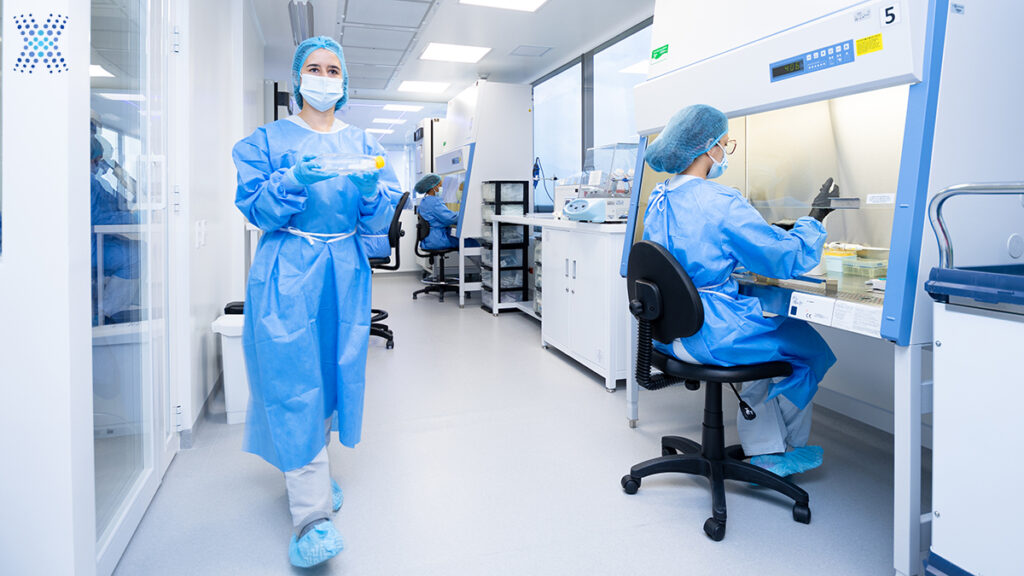
2. Stem cell preparation and processing (culturing and expansion)
Specific protocols and technology for assuring high potency
Stem cell therapy offers a unique approach to treatment because unlike surgery, it’s a minimally invasive procedure. Patients receive stem cells through an intravenous, intramuscular, intraarticular, intradiscal, intradermal, or intrathecal injection. It’s important to understand that stem cells are biologics, so they must be harvested, tested, and screened before treatment. And even stem cells of the same type—such as the mesenchymal stem cells used at BioXcellerator—may vary significantly in quality and viability.
Testing for health
One reason testing is important is that donated umbilical cords come from human tissue from numerous donors. That’s why all donors are screened for genetic abnormalities and overall health. Harvested cells are also screened for abnormalities and infections.
Testing for quality and culturing only high-potency cells
In addition to an initial screening for healthy cells, some clinics have developed proprietary protocols for selecting and processing stem cells to enhance effectiveness because even very healthy stem cells can differ based on their potency and healing potential.
Although clinics may not share exact details on their protocols, it’s important to understand the general process they use (if any) to ensure potency and viability of treatment.
For example, at BioXcellerator, we test cells for specific biomarkers. Only those cells that meet strict criteria are then cultured and expanded into formulations of high-potency stem cells that make successful treatment outcomes more likely.
Treatment in the U.S. or outside the U.S.?Although the location of a clinic doesn’t make any difference in the quality of care or treatment results, patients do ask why so many leading clinics such as BioXcellerator are located outside the U.S. Because current FDA regulations limit the culturing and expansion of stem cells, U.S. clinics cannot provide the same quality and quantity of stem cells as clinics in other countries. There are many clinics outside the U.S. managed by experienced practitioners that can provide high-quality cells. Be sure to research the reputation of any clinic you might be considering, along with what patients say about treatments there. |
Are you a candidate for stem cell therapy?
Connect with our team today to determine if treatment is right for you.
3. Quantity of stem cells
More cells often lead to improved results and patient outcomes
There are many aspects to medicine—and other facets of life—where more isn’t always better. However, when it comes to stem cell therapy, most studies show that treatment with an increased number of cells can improve efficacy.
The number of cells used is quite important for various treatment protocols. Different clinics alter the amount of stem cells used based on their own research, ranging from tens of thousands of cells to hundreds of millions.
Quantities of stem cells used in U.S. clinics are limited due to FDA regulation and restriction. Limiting the number of cells available for each application will reduce the efficacy and effectiveness of that treatment.
Most patients receiving high-dose stem cell treatments report more rapid response time and sustained relief of symptoms over a long period of time than patients who receive fewer stem cells, like those treated in the U.S. and Canada.
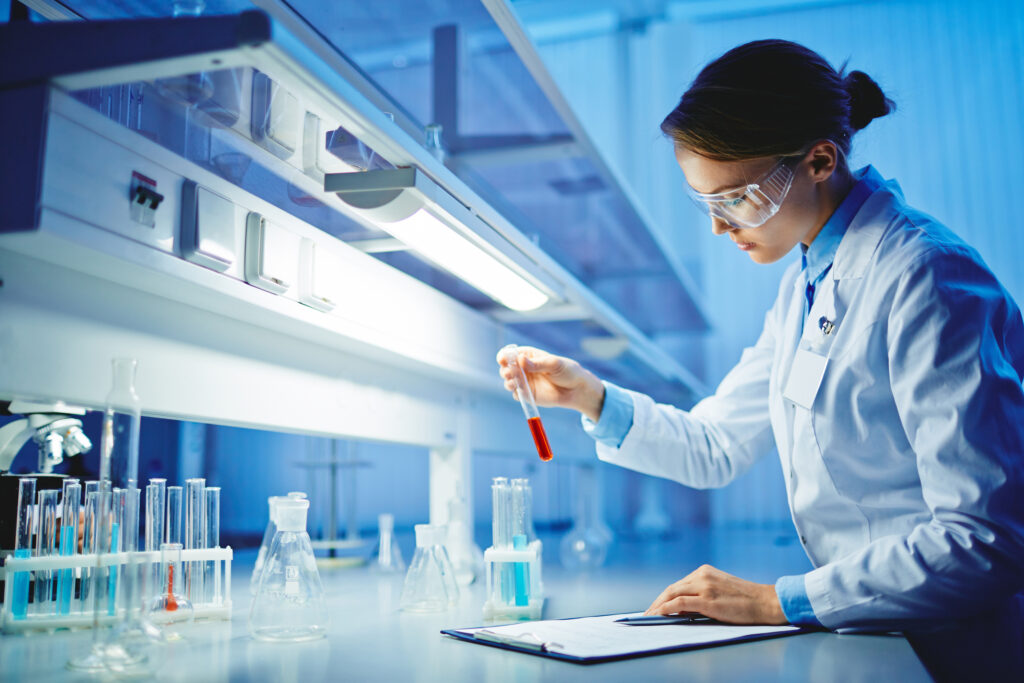
4. Stem cell bank and lab
Technologically advanced laboratories that meet and exceed FDA guidelines, ISO Standards, and GMP standards are able to culture the highest-quality cells.
Many clinics worldwide purchase their cells from large cell banks that mass produce cellular products, freeze them, and ship them to various facilities. Other clinics own and operate their own state-of-the-art laboratories that harvest and culture their own cellular products. This allows them to closely monitor the quality standards of every batch of cells.
If you are not a scientist, it’s unlikely you know which laboratory equipment is best for culturing cellular products. However, one way to gain insight into the quality of the facility and evaluate the safety and efficacy of its treatment practices is to ask whether the lab meets international ISO standards, FDA guidelines, and GMP standards.
Widely established ISO standards are set by the International Organization for Standardization. Examples of relevant ISO standards include:
- Overall quality management systems
- Safety
- Air quality for controlled environments
- Culturing of human cells and biologics
For example, BioXcellerator’s clinic is ISO certified, meets relevant FDA Guidelines, and Good Manufacturing Practice standards as well as other quality criteria — specifically, those based on guidance from the International Society for Stem Cell Research, the European Society for Blood and Marrow Transplantation, and others.
Clinics may also have their own on-site facilities for performing diagnostic procedures, such as blood tests, MRI scans, and other tests, that make treatment more convenient and efficient.

5. Scientific and medical expertise and guidance
Experience and good communication are essential for best patient outcomes
Other criteria that patients find important extend beyond stem cells and facilities to the expertise of the clinic’s staff, including:
- Physicians
Review the backgrounds of doctors who will be treating you, and remember that because cellular medicine is a new and emerging discipline, most MDs aren’t experts in cellular medicine. In fact, most physicians who may be well-known experts in various specialties, such as orthopedics, surgery, and neurology, do not specialize in stem cell therapy, so they may not have the knowledge to offer the best advice on treatment. For example, an OB/GYN may not be at all qualified to provide treatment for orthopedic conditions. But high-quality clinics have a staff of physicians with many years of experience in stem cell therapy and stay connected with colleagues worldwide to maintain their expertise. Depending on your condition, you’ll also want to make sure the clinic offers access to specialists, such as orthopedic surgeons, neurosurgeons, and spine and disc specialists, for specific applications. - Scientists
Although you will not likely interact with a clinic’s scientists, it’s important to look at the profiles of those experts who manage research, lab facilities, and other specialized aspects of cell processing. The best stem cell clinics have leading microbiologists, epidemiologists, and experienced molecular scientists on staff. - Patient care and support staff
Most patients appreciate the support of a caring team. When you first contact a clinic, you might get a sense that you’re working with people who want to help you make an important decision. That’s a good sign, because good communication is essential, because the relationship between you and the clinic you choose may extend months and even years after your first treatment, with ongoing follow-ups to see how you’re doing, prescriptions for physical therapy, and more.
6. Track record
Ask about results, review patient reports, and talk to other patients
You can evaluate the potential for safe and successful treatment in several ways.
1. Clinical results
Ask to review clinical evidence, but keep in mind that evaluating two clinical studies may not present an accurate comparison and that it may require a scientific background to truly understand these results.
Here’s a couple examples:
Mesenchymal Stem Cells for Degenerative Disc Disease Report
Mesenchymal Stem Cells for Knee Osteoarthritis Report
2. What other patients say about their results
Many clinics share patient testimonials and case studies in written and video form so that you can hear about treatment and outcomes from the perspective of other patients.
Here’s a few examples of patient testimonial videos:
3. Talk to patients if possible
Another way to find out what patients say about their experience is to speak with them directly. If you do talk to current and former patients, ask about the results of their treatment, how long it took to see results, and whether they’d recommend the clinic to a friend or family. Plus, ask about aspects they did not find satisfactory, because those answers are likely to give you a better sense of whether you’re getting a biased opinion.
If the clinic refuses to discuss or share outcomes, data, or case studies at all, that’s likely not the sign of a clinic you’ll want to work with.
7. Evaluate cost and travel expenses
An expensive treatment, so consider the value
Stem cell therapy can certainly be expensive, because it takes significant capital to purchase advanced technology and hire an experienced team of scientists and physicians to ensure patients receive the best treatment possible. In addition, patients may have to budget for travel, in some cases thousands of miles. Unfortunately, treatment is not usually covered by insurance.
Price may not indicate quality, but if the price of treatment seems too good to be true, it probably is.The cost of building a state-of-art-lab and treatment facility, hiring top physicians and scientists, and producing high-potency cells can be substantial. Therefore, the price of treatment at leading clinics typically reflects these high costs. And while some clinics may not provide a level of quality that’s as high as others, stem cell therapy can indeed be a case where less-than-ideal treatment is better than no treatment at all. |

8. What conditions can stem cells treat?
Make sure there’s scientific evidence that stem cells have proven safe and effective in treating your specific conditions and health needs
Although research studies show that stem cell therapy can treat a wide range of diseases and disorders, there are some conditions where little to no evidence has proven that these therapies can be effective.
This evidence is usually listed on companies’ websites in the form of scientific references and citations. You might also request this information directly from the company.
Mesenchymal stem cells (MSCs) demonstrate the potential to promote healing of connective tissue in joints, muscles, tendons, and nerve fibers (among others). There is a significant amount of scientific evidence that stem cell therapy can treat:
- Autism
- Autoimmune diseases
- Chronic pain
- Gastrointestinal disorders
- Multiple sclerosis
- Neurological conditions
- Orthopedic and sports injuries
- Osteoarthritis
- Rheumatoid arthritis
- Spine and disc conditions and back pain
- Spinal cord injuries
- Traumatic brain injury
- Crohn’s disease and Ulcerative Colitis
- Diabetes
- Stroke
- And more

Making your final decision
It’s an important one. We’re here to help you make the best choice.
Advanced stem cell therapy offers great promise to treat many diseases, injuries, and disorders, but few physicians have enough expertise to help you decide on this treatment or what clinic to choose. So, as you make this decision, ask these key questions to best evaluate the potential effectiveness and safety of treatment.
And whether you choose our clinic for treatment or not, contact us for more information and help in understanding your treatment options.
 14 Key questions to ask about stem cell therapy as you evaluate clinics:
14 Key questions to ask about stem cell therapy as you evaluate clinics:
1. What type of stem cells will be used?
For example, while some clinics use cells from other sources, BioXcellerator uses mesenchymal stem cells derived from umbilical cords – cells that research shows are more effective than those from bone marrow or adipose tissue.
2. How many stem cells will be administered in each treatment?
Quantity matters. For example, some clinics may provide only a few thousand cells per treatment. At BioXcellerator, we customize that level based on patient needs, but generally provide 30 million to 250 million cells per treatment. In most cases, the number of cells does not exceed more than one million per pound of body weight.
3. How are cells harvested and cultured in the clinic’s stem cell bank and lab?
Clinics may vary in the protocols they use, which can impact safety and effectiveness of treatment and potency and viability of the cells. For example, at BioXcellerator, our lab tests stem cells harvested from donated umbilical cords for specific criteria that indicate cells with the best possible therapeutic potential. Then only those cells that meet strict criteria for potency are cultured and expanded into formulations for treatment.
4. Does the clinic have a track record of successful patient outcomes and clinical data?
Ask clinics for clinical data and patient testimonials.
For example, at BioXcellerator, we regularly publish clinical studies and stories from patients who share their treatment experience and treatment outcomes.
5. Does the clinic specialize in treating the specific condition or injury you or a loved one is seeking treatment for?
Ask the clinic and physicians if they have specialists and a track record for treating your conditions. Some clinics may not be experienced with specific conditions or injuries. For example, at BioXcellerator, we’ve treated patients for autoimmune diseases, spine and disc conditions, spinal cord injuries, osteoarthritis, orthopedic conditions, and many others. And we have orthopedic surgeons, spine and disc specialists, and neurosurgeons with extensive experience on staff.
6. Is the clinic accredited/ISO Certified?
In the U.S., the FDA regulates clinics. But other authorities manage accreditation outside the U.S. For example, BioXcellerator is accredited by INVIMA, Colombia’s regulatory authority that is similar to the FDA. Our clinic is also ISO certified for:
- Scientific, technical, and administrative standards for health research (Res 8430 of 1993)
- FACT-JACIE International standards for the collection, processing, and administration of hematopoietic stem cell therapy products
- GMP standards (Good manufacturing practices)(Res 1160 of 2016)
7. Does the clinic comply with Good Manufacturing Practice protocols in the facility it uses to process stem cells?
A GMP facility is one that adheres to specific manufacturing processes and practices established by the U.S. Food and Drug Administration.
For example, BioXcellerator’s clinic has been designed both to comply with regulatory GMP standards for quality and to meet internationally recognized ISO standards that cover safety, air quality, and processing infusions that contain human cells.
8. Does the clinic have a dedicated team that oversees quality initiatives for stem cell transplantation?
A dedicated quality team helps to better control the quality of stem cells used in treatment and other cellular products used for patients—as well as work to improve that level of quality over time. For example, at BioXcellerator, we have more than 60 professionals dedicated to patient care, quality control, and research including epidemiologists, molecular biologists, and other scientists at the top of their field working each day to ensure the safety, effectiveness, and efficacy of our cells and treatments.
9. How long has the clinic and its staff been performing stem cell transplants?
Ask how long they’ve been operating, how many patients they’ve treated for your condition, and about the experience of their staff and the physician who will be evaluating your condition and administering your treatment. BioXcellerator has been treating patients since 2018, yet our science is based more than 22 years of research – and our team has overseen thousands of stem cell treatments.
10. Does the clinic have a commitment to reporting and following patient outcomes?
Ask the clinic how it follows up with patients to evaluate treatment and how it reports on treatment outcomes. For example, at BioXcellerator, we collect patient data during an exit consultation after treatment, and then follow up 30 days, 90 days, 180 days, and one year after treatment. This ongoing evaluation may vary based on condition. For example, we may wait six to 12 months after treatment to compare a new MRI against a pre-treatment MRI for a herniated disc—but there may be consultations between those two MRIs to find out how patients are feeling.
We publish some of this data here: https://www.bioxcellerator.com/clinical-studies
11. When treating orthopedic injuries and conditions, does the clinic inject cells intravenously to treat knees, hips, shoulders, ankles, and the spine?
If the answer is “Yes,” find another clinic. At BioXcellerator, these conditions are treated by injection of cells directly into the afflicted area, joint, or muscle— although IV stem cells may also be provided as part of each patient’s personalized protocol.
12. When treating spine and disc conditions, will the doctor performing the procedure be using x-ray guidance?
If the answer is “No,” go elsewhere, as this clinic isn’t equipped to evaluate and provide you the safest and most effective treatment. For example, at BioXcellerator, we have an experienced neurosurgeon perform this application using advanced imaging technology such as X-ray fluoroscopy to precisely guide cells in this intradiscal injection of cells into discs and facets of the spine.
13. Will my new patient evaluation be performed by a physician?
If your patient evaluation isn’t performed by a physician, find another clinic, as many clinics will use practitioners with only midlevel training, such as nurses. At BioXcellerator, all of our evaluations are performed by physicians.
14. How much time will my physician spend with me?
If a new evaluation is scheduled for only 15 to 20 minutes, this is not a good indicator of quality care. At BioXcellerator we schedule one hour for each new patient with the physician who will be performing the procedure. Why? Because that’s often how long it takes to properly evaluate a patient, review imaging, and consult with the patient.
Citations
- Jiang, W., & Xu, J. (2020). Immune modulation by mesenchymal stem cells. Cell proliferation, 53(1), e12712. Available from: https://doi.org/10.1111/cpr.12712
- Looi, Qi Hao and Eng, Sue Ping and Liau, Ling Ling and Tor, Yin Sim and Mohd, Yazid Bajuri, and Ng, Min Hwei and Law, Jia Xian. Mesenchymal stem cell therapy for sports injuries – from research to clinical practice. Sains Malaysiana;2020.49(4):825-38. Available from: http://journalarticle.ukm.my/15354/
- Trebinjac S, Gharairi M. Mesenchymal Stem Cells for Treatment of Tendon and Ligament Injuries-clinical Evidence. Med Arch. 2020 Oct;74(5):387-390. doi: 10.5455/medarh.2020.74.387-390.
- Kader N, Asopa V, Baryeh K, Sochart D, Maffulli N, Kader D. Cell-based therapy in soft tissue sports injuries of the knee: a systematic review. Expert Opin Biol Ther. 2021 Aug;21(8):1035-1047. doi: 10.1080/14712598.2021.1872538.
- Baryeh K, Asopa V, Kader N, Caplan N, Maffulli N, Kader D. Cell-based therapies for the treatment of sports injuries of the upper limb. Expert Opinion on Biological Therapy. 2021;21(12):1561-74. DOI: 10.1080/14712598.2021.1928630
- Stewart C. Stem cells and regenerative medicine in sport science. Emerg Top Life Sci. 2021;5(4): 563–73. doi: https://doi.org/10.1042/ETLS20210014
- Song Y, Zhang J, Xu H, Lin Z, Chang H, Liu W, Kong L. Mesenchymal stem cells in knee osteoarthritis treatment: A systematic review and meta-analysis. J Orthop Translat. 2020 Apr 27;24:121-130. doi: 10.1016/j.jot.2020.03.015.
- Cho WS, Chung SG, Kim W, Jo CH, Lee SU, Lee SY. Mesenchymal Stem Cells Use in the Treatment of Tendon Disorders: A Systematic Review and Meta-Analysis of Prospective Clinical Studies. Ann Rehabil Med. 2021 Aug;45(4):274-283. doi: 10.5535/arm.21078.
- Emadedin, M. et al. Intra-articular implantation of autologous bone marrow-derived mesenchymal stromal cells to treat knee osteoarthritis: a randomized, triple-blind, placebo-controlled phase 1/2 clinical trial. Cytotherapy 20, 1238–1246 (2018).
- Freitag, J. et al. Mesenchymal stem cell therapy in the treatment of osteoarthritis: Reparative pathways, safety and efficacy – A review. BMC Musculoskelet. Disord. 17, 1–13 (2016).



